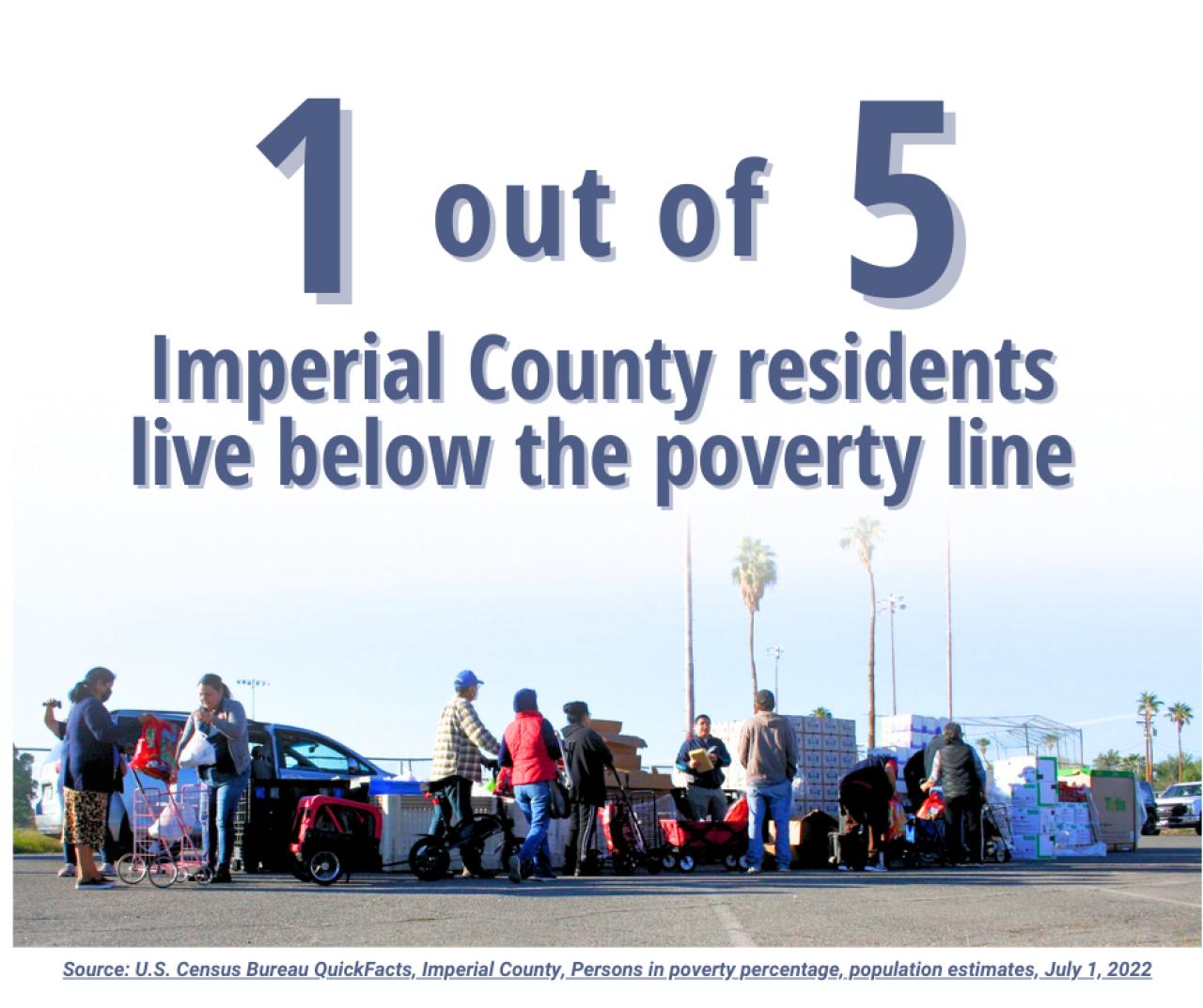Need in Imperial Valley
Imperial County has the highest rate of food insecurity in California, with one in five people unable to access enough affordable, nutritious food, according to Feeding America.
Imperial County Hunger
Imperial County has the highest food insecurity rate in the state of California for both adults and children. As a critical public health issue, food insecurity is associated with numerous adverse social and health issues that prevent people from living an active and healthy lifestyle.
Families in poverty experience chronic hunger, as well as rising rates of obesity and nutrition-related diseases. In Imperial County, 77 percent of adults and 49 percent of teenagers are overweight or obese (SNAP-Ed County Profile, 2018). Imperial County also has many food deserts—low-income neighborhoods with fast food franchises and corner stores, or rural communities with few businesses or services. It can be difficult to find affordable fresh produce, even though we live in a county that produces an estimated two-thirds of vegetables consumed in the U.S. during winter months.
Poverty and access to nutritious food are primary determinants of health and wellness in any community. Food insecure children are more likely to experience a host of health issues that negatively impact their futures. We know that alleviating hunger can strengthen the community as a whole. If people have enough nutritious food to eat, then kids learn more at school, people are sick less often, workers are more productive, crime declines and the cycle of poverty can end its vicious spiral.
Our aim is to ensure all residents have access to nutritionally valuable food. Read about our programs to learn more and please consider donating to support our mission of fighting hunger in Imperial Valley.
Rural Food Banking
Imperial County is home to approximately 180,000 residents which live and work within its seven cities (Brawley, Calexico, Calipatria, El Centro, Holtville, Imperial and Westmorland) and eight unincorporated communities (Bombay Beach, Heber, Niland, Ocotillo, Salton City, Seeley and Winterhaven). Although the county population is relatively small for California, we serve a large percentage of residents - 25,000 every month.
The county has very few cities but is the 10th largest county by area in California, which creates challenges for us as a rural food bank. We have higher transportation costs, higher poverty levels, fewer resources from corporations and foundations, and less industry support for food donations.
Access to food is limited for our residents because of the high poverty rate and transportation challenges. Many have to eat unhealthy food from a gas station/convenience store or face a long drive into town where they must have enough money to stock up on groceries. In many areas of the county, there are no partner agencies that can help us distribute food, so we transport and distribute the food ourselves from our mobile food pantry vehicles. Most of our sister food banks in urban areas do not distribute food themselves and are able to rely solely on partner agencies. Food distributions in rural areas are complex to organize and ultimately add to the cost of getting food to the people who truly need it.
Feeding America has information about rural communities facing hunger if you’d like to read more.
Food Banking in Extreme Heat
Imperial County is an extremely hot place! It is often over 115 degrees in the summer, even reaching 122 degrees. From May to September, the heat can be dangerous, especially if you have to work outside. As a food bank, we have to factor the heat into everything we do and come up with creative solutions to safely serve people in need.
We do our food distributions early in the morning before the temperatures rise. Food spoils quickly in the heat, so we make sure our food is always stored correctly and our trucks are refrigerated. Our distribution sites need to be close to people’s homes or public transportation, so they don’t have to walk far in the heat. If doing a drive-through distribution, we need to be as efficient as possible in case someone’s car doesn’t have air conditioning. Our warehouse had to be designed with double doors to keep the hot air and desert dust out. Giant cooling fans were installed to maintain a safe working temperature for our staff and volunteers in the warehouse. Overall, we work hard to provide our services while ensuring everyone’s safety in extreme heat.
